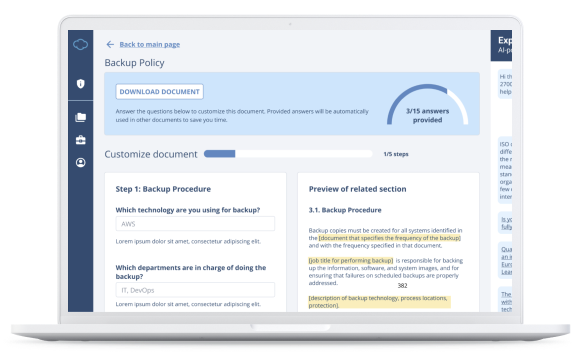- Articles 5 to 15 of this Regulation shall not apply to small and non-interconnected investment firms, payment institutions exempted pursuant to Directive (EU) 2015/2366; institutions exempted pursuant to Directive 2013/36/EU in respect of which Member States have decided not to apply the option referred to in Article 2(4) of this Regulation; electronic money institutions exempted pursuant to Directive 2009/110/EC; and small institutions for occupational retirement provision.
Without prejudice to the first subparagraph, the entities listed in the first subparagraph shall:
- put in place and maintain a sound and documented ICT risk management framework that details the mechanisms and measures aimed at a quick, efficient and comprehensive management of ICT risk, including for the protection of relevant physical components and infrastructures;
- continuously monitor the security and functioning of all ICT systems;
- minimise the impact of ICT risk through the use of sound, resilient and updated ICT systems, protocols and tools which are appropriate to support the performance of their activities and the provision of services and adequately protect availability, authenticity, integrity and confidentiality of data in the network and information systems;
- allow sources of ICT risk and anomalies in the network and information systems to be promptly identified and detected and ICT-related incidents to be swiftly handled;
- identify key dependencies on ICT third-party service providers;
- ensure the continuity of critical or important functions, through business continuity plans and response and recovery measures, which include, at least, back-up and restoration measures;
- test, on a regular basis, the plans and measures referred to in point (f), as well as the effectiveness of the controls implemented in accordance with points (a) and (c);
- implement, as appropriate, relevant operational conclusions resulting from the tests referred to in point (g) and from post-incident analysis into the ICT risk assessment process and develop, according to needs and ICT risk profile, ICT security awareness programmes and digital operational resilience training for staff and management.
- The ICT risk management framework referred to in paragraph 1, second subparagraph, point (a), shall be documented and reviewed periodically and upon the occurrence of major ICT-related incidents in compliance with supervisory instructions. It shall be continuously improved on the basis of lessons derived from implementation and monitoring. A report on the review of the ICT risk management framework shall be submitted to the competent authority upon its request.
- The ESAs shall, through the Joint Committee, in consultation with the ENISA, develop common draft regulatory technical standards in order to:
- specify further the elements to be included in the ICT risk management framework referred to in paragraph 1, second subparagraph, point (a);
- specify further the elements in relation to systems, protocols and tools to minimise the impact of ICT risk referred to in paragraph 1, second subparagraph, point (c), with a view to ensuring the security of networks, enabling adequate safeguards against intrusions and data misuse and preserving the availability, authenticity, integrity and confidentiality of data;
- specify further the components of the ICT business continuity plans referred to in paragraph 1, second subparagraph, point (f);
- specify further the rules on the testing of business continuity plans and ensure the effectiveness of the controls referred to in paragraph 1, second subparagraph, point (g) and ensure that such testing duly takes into account scenarios in which the quality of the provision of a critical or important function deteriorates to an unacceptable level or fails;
- specify further the content and format of the report on the review of the ICT risk management framework referred to in paragraph 2.
When developing those draft regulatory technical standards, the ESAs shall take into account the size and the overall risk profile of the financial entity, and the nature, scale and complexity of its services, activities and operations.
The ESAs shall submit those draft regulatory technical standards to the Commission by 17 January 2024.
Power is delegated to the Commission to supplement this Regulation by adopting the regulatory technical standards referred to in the first subparagraph in accordance with Articles 10 to 14 of Regulations (EU) No 1093/2010, (EU) No 1094/2010 and (EU) No 1095/2010.

